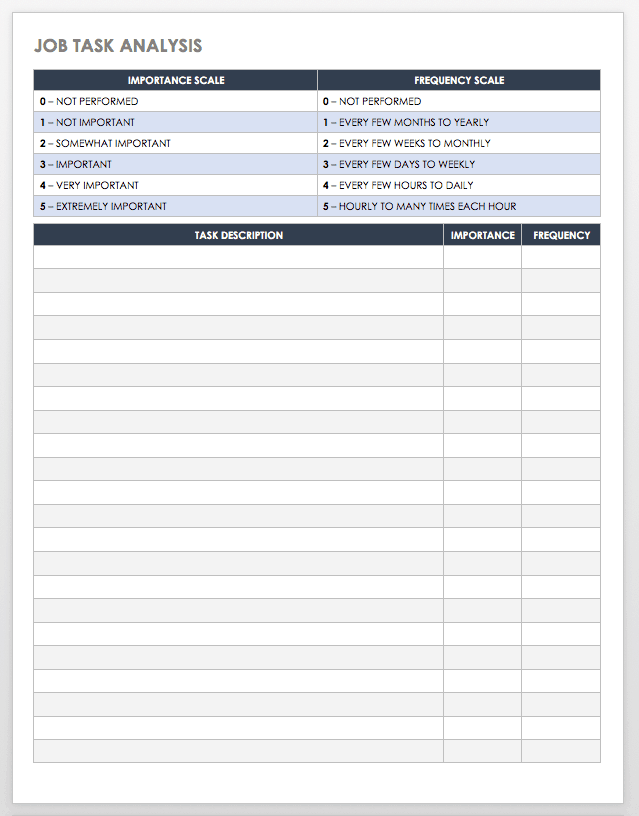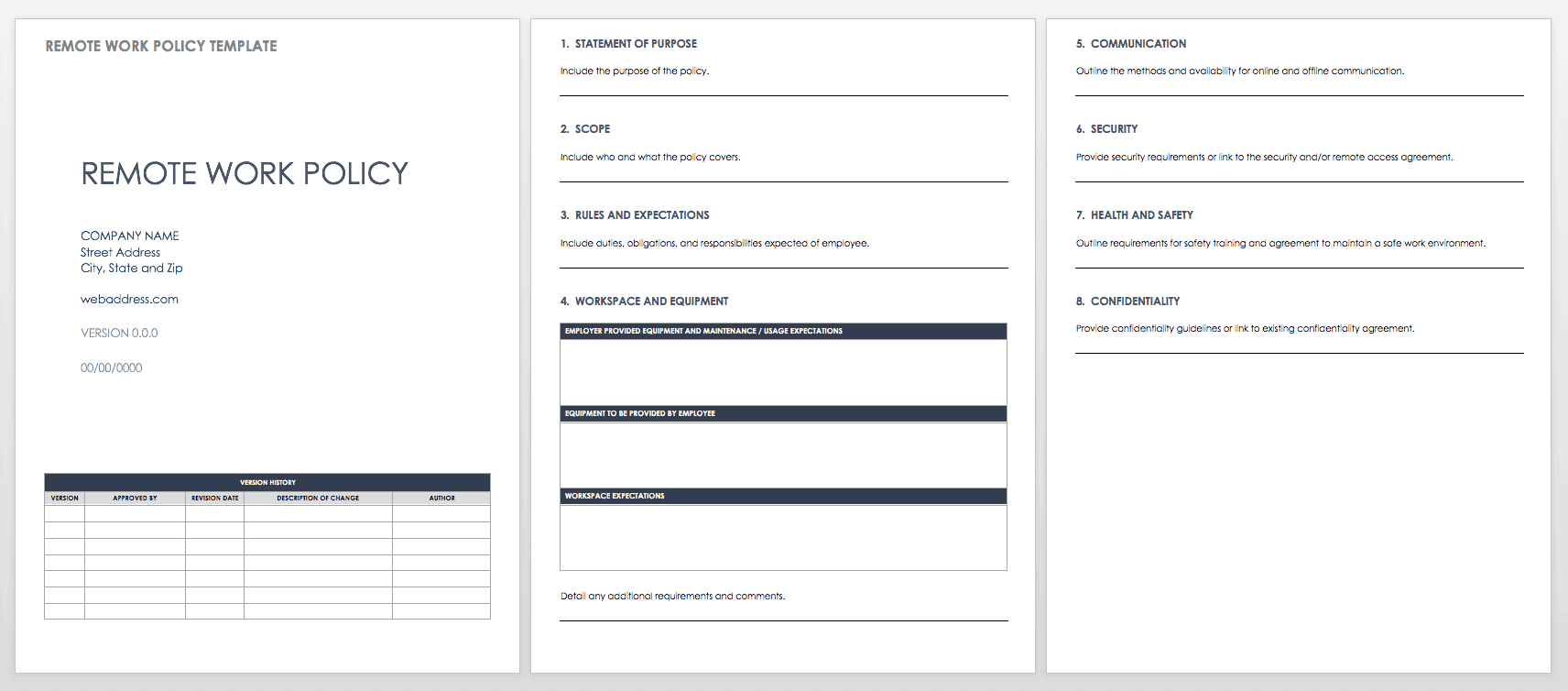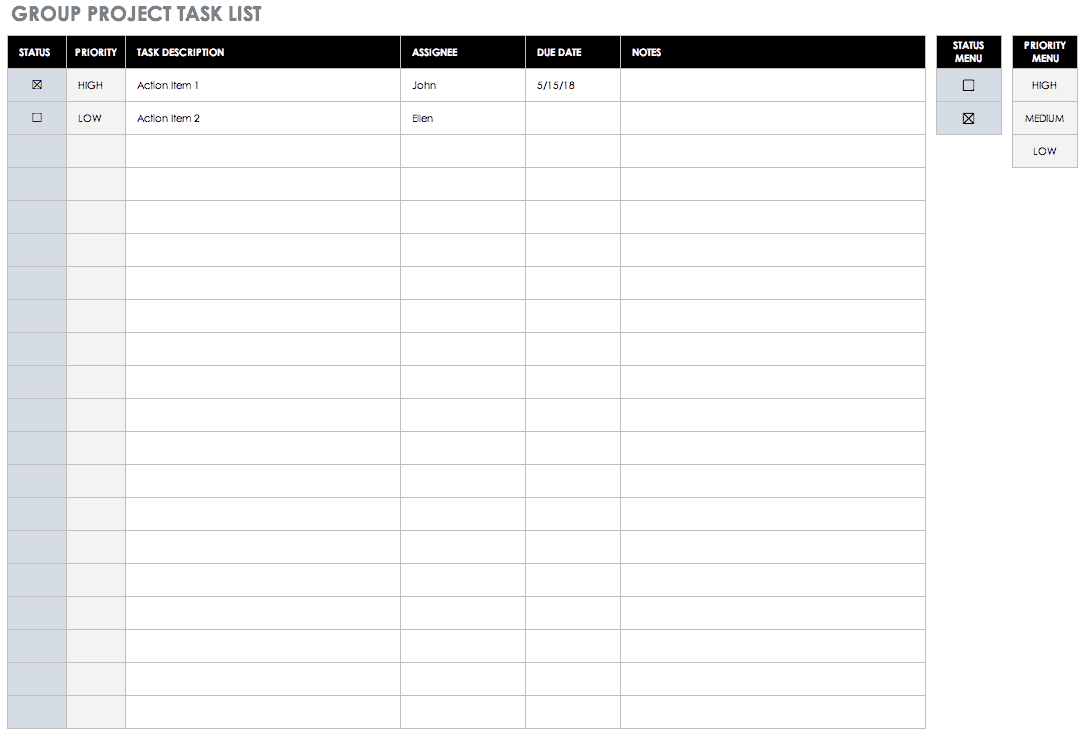Trust but Verify: Build the Right Remote Work Policy
A remote work arrangement generally begins with a request. If approved, the employee and company define the parameters of remote work expectations. From a business standpoint, the home office is considered an extension of the workplace, and as such, employees are expected to adhere to the rules of office or corporate behavior and to be as available as they are in the business office.
Organizations small and large, ranging from finance and government agencies to healthcare and education, often allow some form of flexible remote work that is carried out sporadically or on a short-term basis, such as when a child is home sick or when the employee is traveling. However, employees who regularly spend three or more days per week working outside the office are often guided by a formally signed telework or telecommuting agreement. These agreements can be simple (such as for a specific project) or complex (such as for a geographically distant worker).
The core purpose of the policy is to prevent even the appearance that the employee is not doing their job. The agreement often includes language that mandates a dedicated and quiet workspace and expressly prohibits engagement in the care of dependents or running errands during core business hours. It will also define behavioral expectations and equipment ownership, clarify operational communication preferences, and define success when the worker is outside of the office.
The policy is built as a collaborative document between human resources, C-level executives, information technology, and other business leadership, and it should be structured to foster a "trust but verify” relationship. The actual breadth of the policy is up to the individual company. In this article, you’ll also find a free downloadable template for remote work arrangements.
What Jobs Are Right for Telecommuting?
According to a Gallup report released in February 2017, 43 percent of workers in the United States work remotely at least some of the time. While there will always be work that is best done in a traditional business office environment or is only available on-site such as manufacturing, brick-and-mortar retail, and most food service, many organizations benefit from the flexibility offered by remote work. Complicated or time-consuming work can benefit from eliminating the distractions of a busy office. For example, writers, editors, analysts, and programmers require minimal disruption.
But what about collaborative teams that depend on rich interaction? Today’s technology allows integrated teams to work in nontraditional settings at least some of the time. And while multilocation collaborative work is fostered through enhanced communication methods, such as video chat and instant messaging, adding some face-to-face time may be necessary for maximum productivity. This can be woven into the remote employee policy statement.
The key to effective remote work is clarifying the level of engagement using the most practical communication methods. And with more telecommuting opportunities, organizations enjoy greater retention and productivity for a growing number of roles.
If you are a manager or an HR representative determining if a job would be suitable for remote work, you may want to work from a job task analysis form to examine the actions that go into a job. On this template, you can list the tasks required to complete a job, rate the importance of each task, note the frequency of the actions are performed, and whether they can transfer to remote work.
Which Employees Are Right for Telecommuting?
What characteristics make for a successful remote worker, and how should success be measured? While remote work is highly desired, not all employees are ready or able to thrive in work-at-home situations. The remote worker would ideally exhibit these basic qualities:
-
Ability to work without supervision; strongly skilled and/or experienced
-
Strong communication skills with peers and management
-
Strong organizational skills
-
Adherence to deadlines
-
Available during core hours
-
Adherence to corporate policies
-
Highly productive
-
Ability to solve problems
-
Available for in-office meetings
These traits can be evaluated through annual performance reviews, supervisor recommendations, and in-home inspections. Years of service may also factor into the decision to allow remote work.
What to Include in a Remote Work Policy
Industries in which compliance and information security are policed by regulated mandates, such as healthcare and finance, may have more complex remote work policies. Depending on the industry or the complexity of the remote arrangement, the policy will cover general expectations, online data security and/or physical workplace security, access rights to company-owned information, core hours, duration of contract (if applicable), and rules for off-site work.
For most remote workers there is one simple rule: If you can’t do it in the office, don’t do it at home.
Other elements of the agreement may include the following:
-
Compensation and Benefits: Specifies core work hours, adjustments to compensation if appropriate, and overtime policy.
-
Office Equipment and Dedicated Workspace: Defines what is provided by the business and the responsibilities of the employee, including mobile devices, laptops, adequate access to internet service, VPN access, software duplication policies, damage or theft of company property, and data security. A safe and distraction-free workspace is often required.
-
Covered Expenses: Indicates what (if any) expenses qualify for reimbursement. Examples include internet service, supplies, or office furniture.
-
Liability/Worker’s Compensation: Specifies policies that include injuries at home, the protection of company assets from guests or other family members, and any additional insurance requirements.
-
Communication: Establishes methods and availability for online and offline communication, including security for remote device access.
-
Goals and Expectations: Notes methods for measuring and reporting on success, as well as any additional participation that measures the remote work experience.
The remote work policy template below provides guidance for creating or revising the rules and standards that apply to off-site employees. Download it for free and customize it to fit your organization’s unique needs.
Download Remote Work Policy Template - Word
As you commit to a remote work policy, remember to establish guidelines for remote access as well. This checklist can help you set the foundation for this essential plan.
How to Implement a Remote Work Policy
After you’ve established the guidelines around remote work, you can then implement your remote work policy. Even for employees with all of the right qualities (listed above), the transition from in-office to a remote work environment can be a challenge. Be sure the remote worker fully understands and agrees to the policy. Set a date in the very near future to assess performance and determine if the situation is working well for both the employee and the business.
In addition to a thorough policy and solid implementation plan, providing the right tools and resources to remote workers will help them thrive. These may include the following:
-
Expense account for co-working space, internet access, telephone service, and transportation
-
Access to technology, such as a laptop, printer, and software tools
-
Communication and collaboration tools, including Google Drive, Slack, and Skype
Put all of this together and you’re sure to develop an arrangement that benefits both the employee and the company, improves employee morale, maintains direction, and ensures team members are able to perform their best, regardless of their location.
How to Negotiate a Remote Work Arrangement
Remote work is the new norm for most organizations. However, if it is uncharted territory for your organization or if you’re entering a new company, you may have to negotiate a remote work arrangement with your employer. Before you seek permission to work remotely, be sure you have the capabilities to perform the duties required from a remote location:
-
Do you have a quiet location where you can focus on work?
-
Are you self-motivated?
-
Can you deliver on your responsibilities if you are away from co-workers and the office?
If the answer to the above questions is yes, you should find out if your company has an existing remote work policy. Once you determine the company’s policy (or lack thereof), you can create your proposal. In your he proposal, you should do the following:
-
Explain why you want to work remotely.
-
Provide evidence that working remotely will positively impact your work performance (increase productivity, improve morale, etc.).
-
State exactly what your remote work will look like: Is it part-time or full-time? Will you be taking a break to pick up your kids? What hours will you work?
-
Demonstrate how the company will be positively impacted by your remote arrangement. Will you start work earlier because you don’t have to commute?
When you are ready to present your proposal to your boss, be sure to schedule an in-person meeting that allows enough time to discuss your proposal, and be prepared with details. During the negotiations, you may need to agree to a temporary trial period that is followed up by a review.
Once your remote work begins, proactively schedule check-in meetings with your boss to discuss your performance.
If you’d like extra help staying on track in your new role as a remote worker, you could also introduce task lists and checklists to your routine. For example, with the prominence of collaboration, the group project task list below could be a valuable addition to your repertoire.
Download Group Project Task List
Additional Remote Work Policies
Remote work policies set the rules of engagement and expectations for workers outside of the traditional office setting. Most business policies that apply to in-house workers also apply to those working remotely; this is often the first statement in a remote policy. Because the home office is essentially an extension of the company and the worker represents the company, they must abide by additional business policies that may include the following:
-
Codes of conduct
-
Social media use
-
Attendance
-
Confidentiality agreements
-
Antidiscrimination regulations
-
Confidentiality
-
Security and data protection
-
Dress code
Attendance rules for remote workers are often more scrutinized because of the potential for abuse. The expectation of being on time, present, and undistracted during core business hours exists even when there is no supervisor present to take note.
Success Strategies for Remote Work Programs
Many industries and individual business units are not working with only an odd teleworker or two; they are building large remote teams that demand the right policies, expectations, and technology.
There are two sides to the institution of remote worker policies. Remote workers have policy-driven responsibilities and unique expectations for off-site work. Often overlooked, the employee’s supervisor must also be able to develop and maintain a productive working relationship. Similar to remote employees, a supervisor must be able to guide, effectively communicate, set appropriate goals, provide essential equipment and resources, schedule in-person meetings as needed, and measure their remote worker’s success. The development of trust is essential.
Hong worked with attorneys to compile an employee handbook to address a virtual-only work environment. “This was crucial since we have flexible work hours and recruit internationally, and the legal system had not yet caught up with a virtual-only company platform,” she says.
Even with enhanced technology that allows collaborative work from anywhere, the privilege can be an easily revoked. Those enjoying the personal benefits of less commuting time and flexible working conditions are expected to do more. Stand out by being a “go to” leader for questions, quick to respond, easy to find, and by never missing a milestone.
There is an unwritten rule for those working at home: Be available and exceed expectations.
Remote Work: A Key Benefit That Keeps the Best and Brightest
While low unemployment rates narrow the pool of available workers, especially those with experience and specialized skills, companies are investing resources and adopting creative solutions to maintain valued staff. This is where enhanced flexibility options, such as remote work options, come into play. Technology is also increasing the number and scope of positions that qualify for remote opportunities without sacrificing collaboration or communication.
Cost savings are another huge benefit to businesses that embrace remote workers, as corporations need less office space, equipment, infrastructure, and utilities. Not only that, but increased productivity, fewer sick days, and overall increases in job satisfaction impact the bottom line. In fact, the 2017 Gallup report reveals greater productivity and less absenteeism among remote workers.
As the number of remote workers continues to grow, Gallup’s findings are a reminder that 53 percent of workers say a role that offers better work-life balance is “very important” when considering a job. Similarly, 51 percent would change jobs for increased flexibility, and 37 percent identify part-time remote work flexibility as a key factor when accepting new opportunities.
How to Combat the “Water Cooler Effect“ for Remote Workers
The transition from a traditional in-office environment to a remote work situation creates fundamental changes for supervisors and employees. The old adage “out of sight, out of mind” hits home. Many supervisors want to “see” employees working, have quick access to them, and be in a position to guide them. At the same time, employees working away from the hustle and bustle of the office can experience isolation when separated from the organic interactions in the break room or passing a colleague in the hall, or they can feel out of the loop on important information.
Some companies are even retracting remote work, claiming that collaboration inspires innovation and that face-to-face interaction is the best way to achieve this. Many believe that a certain kind of magic can only be achieved through spontaneous and personal interaction, often called the “water cooler effect.”
In many cases, technology can provide an effective bridge through the use of video chat, instant messaging, and even old-fashioned email that replicates organic in-person conversations, such as those in the breakroom or hallways.
Policies can also mandate regularly scheduled in-person meetings or training opportunities to balance in-office interaction with the productivity-boosting activities of off-site work.
There is also the element of fairness. Not all jobs qualify for remote work, and some employees may not have the right skills to work from home. However, upfront communications and policies that qualify the job and the worker can help limit misunderstandings.
Companies Rethinking Their Remote Work Policies: A Trend?
Startling the business world, IBM, which enacted remote work initiatives over 20 years ago to save office space, recently retracted its policy, leaving many remote workers with a choice: Come to the office or find another job. Similarly, Yahoo, famous for anytime, anywhere availability, rethought its policy for remote work.
These companies have two things in common: First, they have chosen to adopt a collaborative Agile methodology. This practice thrives on face-to-face interaction that is thought to drive higher levels of innovation.
Second and more notable, according to the Wharton School, declining revenues have the two companies seeking new methodologies to stem the bleeding. These companies, in their retrenching efforts, have adopted an “all hands on deck” work ethic built on the belief that the best ideas only come from an engaged and present workforce. Wharton’s experts also cite that this may not be an emerging trend but reflective of corporate decisions that are best able to meet goals and competitive realities.
It remains to be seen if these “return to the office” policies allow the companies to retain the best and brightest who demand a greater work/life balance.
Unite Remote Workers with Real-Time Work Management in Smartsheet
Empower your people to go above and beyond with a flexible platform designed to match the needs of your team — and adapt as those needs change.
The Smartsheet platform makes it easy to plan, capture, manage, and report on work from anywhere, helping your team be more effective and get more done. Report on key metrics and get real-time visibility into work as it happens with roll-up reports, dashboards, and automated workflows built to keep your team connected and informed.
When teams have clarity into the work getting done, there’s no telling how much more they can accomplish in the same amount of time. Try Smartsheet for free, today.





